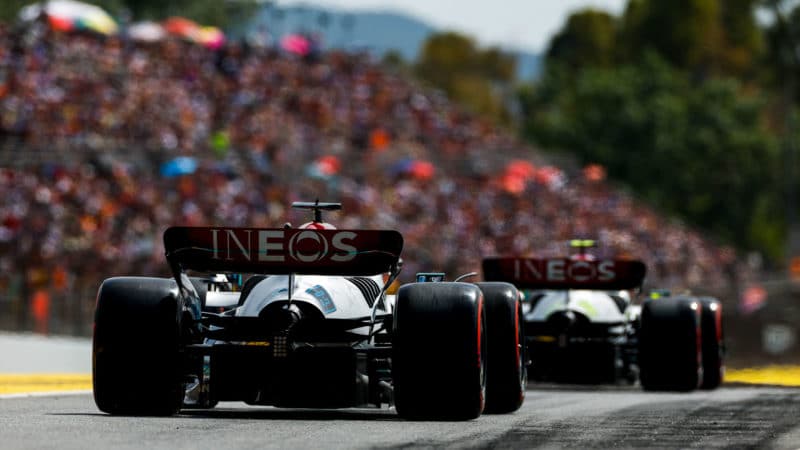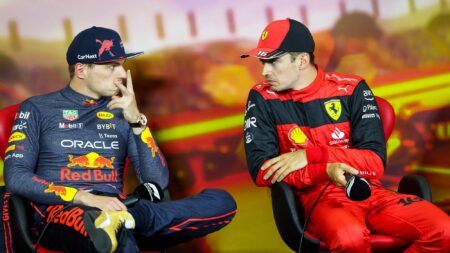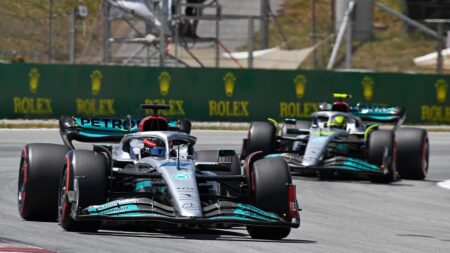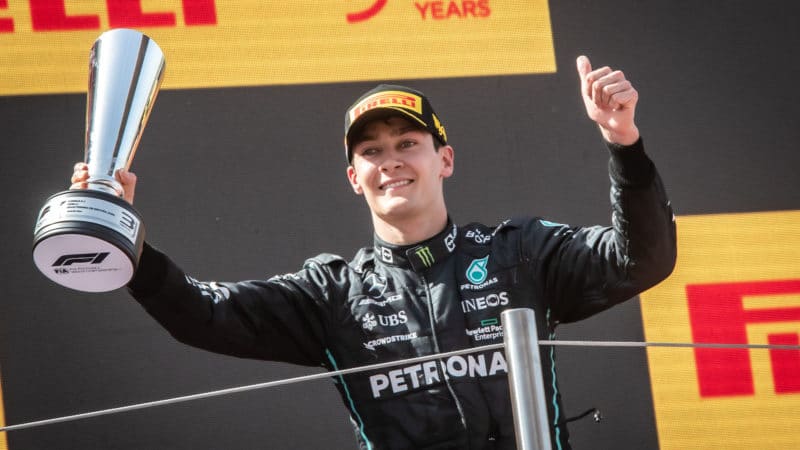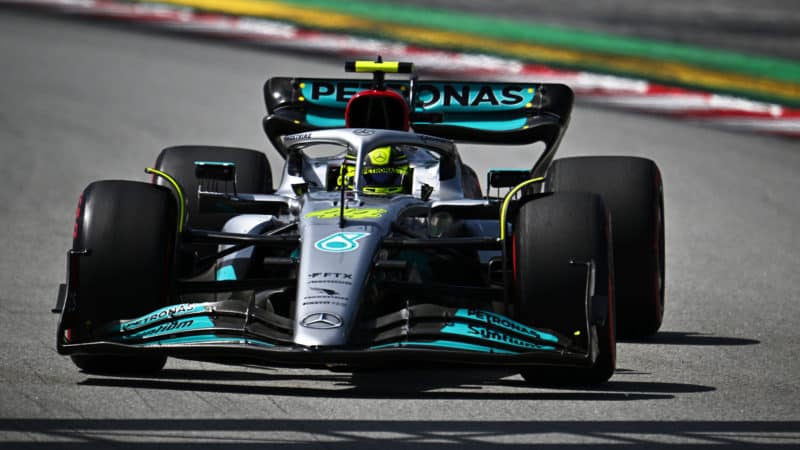The Barcelona performance grew out of two things – ongoing work back at the factory to understand set-up and the porpoising issues, and the parallel programme of planned development that saw the team introduce an upgrade package, albeit one that wasn’t as significant as that at Ferrari.
There were modifications to the front endplates and the floor edge, and a new bib vane added to the keel. Meanwhile Hamilton and Russell both took new PUs on Friday, and a fresh engine always provided a little extra performance.
The fact that the aero parts seemed to work was good news for technical director Mike Elliott, still relatively fresh in a job he took over last year, and inevitably in the wars somewhat in recent months. He’s tried to draw positives from the experience.
“I guess, for me, I’m fairly new as a technical director, so it’s a huge challenge,” he explained in Spain.
“I think we’ve been lucky enough to be right at the front for a pretty big period of time, and to now find ourselves chasing is a challenge.
“It’s also quite a lifting one, it’s quite nice to be the challenger, to be coming from behind. I think there’s a chunk of pressure, because there’s always going.
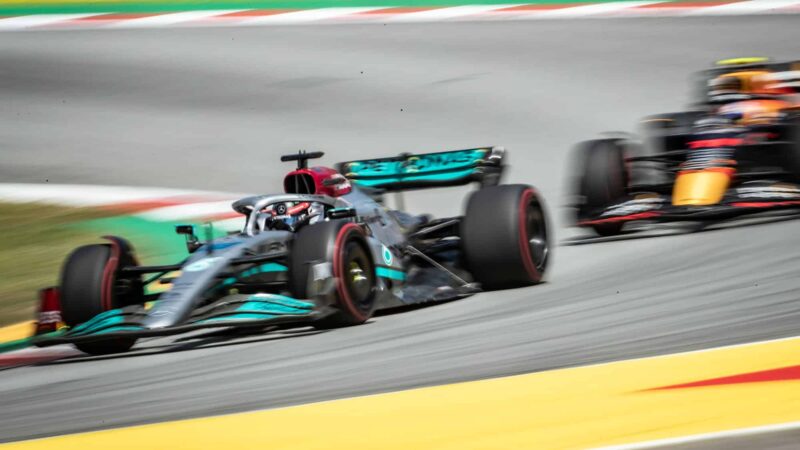
Russell demonstrated new Merc’s ability to run at front – at least for a period
Cristiano Barni ATPImages/Getty Images
“But I think from my point of view as a technical director, what’s been amazing to see is the amount of effort that’s gone in at the factory – in aerodynamics, in vehicle dynamics, to see how we make the best of it, and in design and production to bring the parts that we’ve brought here.
“So this is a challenge, this is what engineers love. I think it’s been a healthy challenge, and one we’re enjoying.”
Elliott confirmed that the Barcelona upgrades focused both on general performance gains, as well as the dreaded porpoising: “There is the normal development of the car that you would do anyway, and then I think we’ve done quite a bit of work to try and understand the bouncing effects, to work out how we best mitigate those. And we’ve brought bits that definitely settled the car down.”
